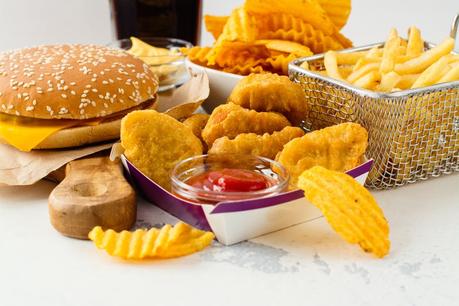
McDonald's has announced it is improving its happy meal menu by reducing calories, saturated fat, sodium and added sugar. It also will make efforts to remove artificial preservatives and flavors from Chicken McNuggets.
LA Times: A better solution than healthier Happy Meals: eating less fast food [not available in the EU]Perhaps the biggest step of all, McDonald's now includes water as the Happy Meal drink rather than soda.
While these changes deserve applause and seem beneficial at first glance, let's be honest: McDonald's didn't do this to be altruistic. Its concern is not our nation's health. Its concern is profit for its business and its shareholders. It saw the public interest in healthier options and followed the market demand.
Having the appearance of healthier choices on its menu may be working.
According to a University of Connecticut study, the strategy may be working for McDonald's bottom line, but not for our collective waistline.
Between 2010 and 2016, there has been a steady increase in the number of parents who buy their kids lunch or dinner from one of the four main fast food chains. Up to 91% do so at least once per week, averaging 2.4 times per week. That is an increase from 79% and 1.7 times per week in 2010.
If parents were sticking to the "healthier options," perhaps that would be acceptable. Unfortunately, the study also showed an increase in the percentage of parents who buy "unhealthy sides" and sugary drinks to add to their kids' meals.
So, even if the Happy Meal menus are healthier, that only benefits those who stick to the Happy Meal. But the data suggests we are giving in to the temptation to add the soda, the fries, and the shakes anyway.
Researchers from Northwestern have labeled this " the dieter's paradox ". They noticed that people would underestimate the number of calories in a burger when it was paired with a side salad. That's right. Their study subjects estimated a burger with a side salad had fewer calories than a burger by itself.
Also called the "negative calorie illusion," this allows people to rationalize adding the extra fries, a soda or a shake since they otherwise are being healthy. Thus, the potentially brilliant marketing move - make a "Healthier Happy Meal" to get parents in the door, and then allow the negative calorie illusion to take over as parents rationalize adding unhealthy sides.
Most importantly, should eating better fast food be our benchmark? I would argue the ultimate benchmark is eating at home with freshly prepared meals - meals that we make ourselves, where we know every ingredient. Meals where we control the portion sizes and limit the unhealthy temptations that go along with fast food meals. If we make that our goal, then healthier fast food still falls woefully short.
Healthier fast food may be good for a company's bottom line, but it still isn't ideal for our collective waistline.
Thanks for reading,
Bret Scher, MD FACC

